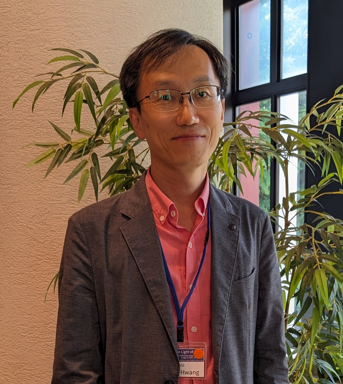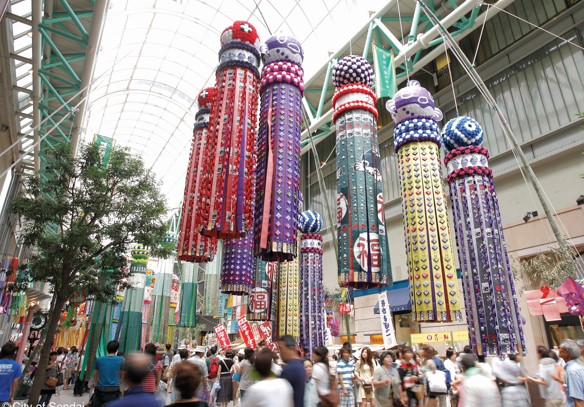Wonder. Curiosity. Reflection. Connection. Tranquility. Inspiration. These are just some of the feelings and thoughts that occur when looking up at the starry sky. Since ancient times the cosmos have been appreciated for not only their romantic image, but subject of scientific interest. The last few years have seen huge and rapid advancements in space technology and research, highlighted by the launch of the James Webb Space Telescope (JWST) in 2021 by NASA. The next “big” thing in the field of astronomical observatory is the “ELT”—Extremely Large Telescopes such as European Extremely Large Telescope and Giant Magellan Telescope being built in Chile and Thirty Meter Telescope to be built in Hawaii, US or La Palma, Spain. The first of its kind designed to observe the universe in visible and infrared light with unprecedented resolution and sensitivity, these kind of Extremely Large Telescopes (ELTs) will be the premier ground-based optical-infrared facilities from the 2030s onward.
Building upon this momentum, a series of three conferences titled “ELT Science in Light of JWST” were created to review and highlight recent JWST discoveries and study their implications for the science operations of ELTs and planning of their instrumentation and user services. The first session was held in the United States in December 2023, the third is being planned for Europe at an unannounced date, and the second was held right here in Sendai, Japan from June 3-7, 2024.
In total, there were approximately 130 participants, including 50 international participants from 10 countries. The conference was held inside Sakura Hall, a venue located inside the Katahira Campus of Tohoku University, a 15-20 minute walk from JR Sendai Station. Seeking an opportunity to gain valuable feedback to attract and support future MICE while also improving services and facilities, staff from the Sendai Convention Bureau interviewed one of the conference organizers.

Welcome to Sendai, Dr. Narae Hwang!

ELT Science in Light of JWST welcome sign at venue entrance.
Dr. Narae Hwang is a distinguished and active member of the Asia-Pacific and global observational astronomy communities. His resume includes a longlist of past achievements in both research and project management assignments, leading to his current position as Astronomer and Senior Advisor at Center for Large Telescopes (CfLAT), Korea Astronomy and Space Science Institute, and representative of the Korean community on the Gemini Board (a multi-country partner organization which oversees use of two large telescopes). Dr. Hwang’s primary role in the conference was coordination, review and selection of the educational program. Dr. Hwang remarked it was an enjoyable but difficult task to fill the conference with quality content, not because there was not enough material to cover the 5-day conference, but because there was an abundance of fascinating material to review while carefully considering the needs of participating astronomical observers, instrument builders, and theorists.
Dr. Hwang lived in Tokyo, Japan from 2008-2012 when doing research at the National Astronomical Observatory of Japan (NAOJ), but he has only just recently become a fan of Sendai. Last August Dr. Hwang visited Sendai for the first time to begin planning this conference with other organizers. The timing coincided with our city’s most famous event, the Tanabata Festival! In a strange coincidence, the weekend following the conference (June 8-9) will be the Kizuna Festival, a special festival which rotates locations throughout the Tohoku region’s six prefectures. The colorful Tanabata Festival decorations hanging in the city shopping arcades welcomed Dr. Hwang to Sendai and will also part him a memorable farewell.

Tanabata Festival decorations in Sendai.
“Sendai is like Daejeon (Korea) where I live. It is a modern city filled with urban greenery, less crowded than Seoul or Tokyo, and feels very spacious. However, I think Sendai is easier to live because of the mild climate. I can’t recommend a trip to where I live in Korea during the winter because sometimes the temperature can reach -15℃, and snow can be piled up for a week!”, says Dr. Hwang.
He also made positive remarks about Sendai’s convenient access by shinkansen from Tokyo (90 minutes), connectivity of Sendai International Airport with domestic locations across Japan and direct international flights with locations such as Taiwan and Korea where many participants came from. Above all, he loves eating Japanese food every day. His favorites include yakiniku (grilled meat), sushi, karaage (fried chicken) and especially Sendai’s specialty: “gyutan” (grilled beef tongue). Meeting participants also enjoyed gyutan which was prepared and grilled on-site by a chef during the conference’s reception.
“City of Trees” Sendai offers both rich nature and urban greenery along with the conveniences of a large, modern city.
Sendai’s most famous cuisine “gyutan” (grilled beef tongue) is a must-try for meat eaters!
Like the previous one in US in this conference series, the Japanese conference venue is a university facility, arranged by participating faculty members. Sakura Hall is a popular choice for lectures, seminars and academic conferences, and the venue is available to non-faculty conference organizers as well (conditions apply). The single 2nd floor meeting room can accommodate 156 in school seating. The open 1st floor is commonly used for poster sessions, coffee breaks, and registration. While Sakura Hall is a relatively new building, its design was carefully considered to match the surrounding historic brick and wooden campus buildings, over a dozen of which are classified as “Registered Tangible Cultural Properties”. Between sessions, participants can be found enjoying architecture, abundant greenery and nearby cafes. It is a beautiful setting with easy downtown access.
Dr. Hwang says the venue location, facilities and equipment are suitable to hold conferences. The compact venue and open first floor made it easy for participants to connect with each other and exchange ideas. Sometimes university venues can be older or difficult to rearrange furniture, but there is no such concern here.
Sakura Hall is a popular venue for compact academic conferences. During early spring, a “sakura” cherry blossom blooms in front of the hall.
“Thanks to the hard work and preparation of my colleagues at Tohoku University, with special attention to Astronomical Institute Prof. Masaomi Tanaka, ELT Science in Light of JWST is running smooth from an administrative perspective”, remarked Dr. Hwang. He soon added, “However, honestly Prof. Tanaka worked too hard and seemed to be doing everything from visa support inquires to registration.”
Tohoku University Astronomical Institute Prof. Masaomi Tanaka (right) with Dr. Narae Hwang (left)
Hearing this comment, we at the Sendai Convention Bureau realized that we could have communicated our various support services better during the planning and preparation phases of the conference. While our bureau can not directly perform administrative tasks, we do offer for example, the dispatchment of trained bilingual student supporters (volunteers) which can help with on-site tasks such as registration and welcoming participants. This is a popular service that reduces the burden on organizers and staff members.
One thing that Dr. Hwang thinks would be a powerful tool to attract or host academic conferences is a designated city MICE facility (or part of a larger venue) that is separate from a university campus. Sometimes university campuses can be restrictive in hours of operation, arranging of equipment, or rules regarding food, drinks, and trash collection. He noted a few good examples may include Quebec City Convention Center in Canada, the Sexten Center for Astrophysics in Italy, and Changwon Convention Center and Yeosu Expo Convention Center in Korea. Mostly these are in medium and small sized cities or towns, but they are well connected to nearby hotels and restaurants, making it is easy for participants to move around. They all offer an intimate setting and some offer discounts for academic conferences. Sendai offers a wide range of venues, including city, resort and hot spring facilities, but they are little different to what Dr. Hwang has in mind. We thought the idea is interesting, because a dedicated facility would encourage repeat visits and increase the reputation of Sendai to host such academic conferences.
And lastly, speaking about Japan in general, there is too many one-use plastic items like bags, eating utensils, or toothbrushes in hotel rooms, we were told. This conference series was divided between different geographic regions in part to reduce the carbon footprint of traveling participants, so sustainability is on the minds of organizers and participants. Dr. Hwang hopes next time he comes to Japan there will be less plastic and more consideration for the environment which is common or sometimes mandatory overseas.
Sendai Convention Bureau staff Justin Velgus interviews Astronomer Dr. Narae Hwang.
“Arigato” Dr. Narae Hwang for the valuable feedback and to all ELT Science in Light of JWST organizers and participants for visiting Sendai! The Sendai Convention Bureau will continue to work toward attracting more conferences to Sendai while constantly improving the satisfaction of organizers and participants.
 topへ
topへ